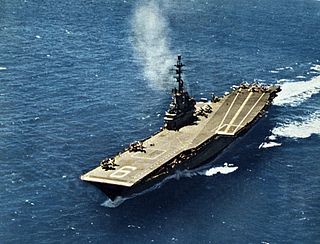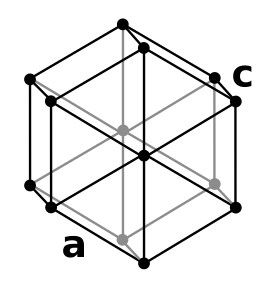
The Álvaro de Bazán class are a new class of Aegis combat system-equipped air defence frigates entering service with the Spanish Navy. They are being built in the Spanish factory of Navantia in Ferrol and are named after Admiral Álvaro de Bazán. In February 2018, it was announced that a design based on the class was selected as one of five finalists for the U.S. Navy's FFG(X) program.
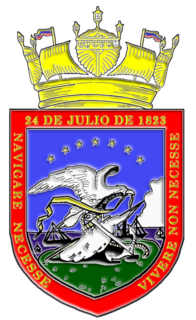
The Navy of Venezuela is officially called the Bolivarian Navy of Venezuela.
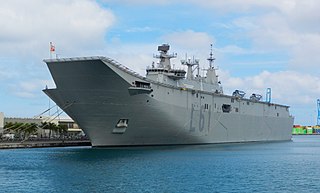
Juan Carlos I is a multi-purpose amphibious assault ship-aircraft carrier in the Spanish Navy. Similar in role to many aircraft carriers, the ship has a ski jump for STOVL operations, and is equipped with the AV-8B Harrier II attack aircraft. The vessel is named in honour of Juan Carlos I, the former King of Spain.

The Scorpène-class submarines are a class of diesel-electric attack submarines jointly developed by the French Direction des Constructions Navales (DCN) and the Spanish company Navantia, and now by Naval Group. It features diesel propulsion and an additional air-independent propulsion (AIP).

The Amur-class submarine, is one of the latest Russian submarine designs. It is advertised as an export version of the Lada-class, a modernised version of the Kilo-class submarine with improved acoustic stealth, new combat systems, and an option for air-independent propulsion (AIP).
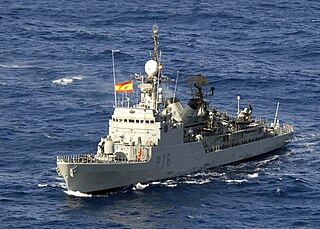
The Descubierta-class corvettes were a series of corvettes built for the Spanish Navy in the late 1970s and early 1980s. These ships were also sold to the Egyptian Navy and the Moroccan Navy. The ships were designed in cooperation with the German company Blohm & Voss, based on the João Coutinho-class corvettes which were designed in the late 1960s for the Portuguese Navy, by the Portuguese naval engineer Rogério de Oliveira. A larger version was proposed for a second batch but the Spanish Navy chose to build the American Oliver Hazard Perry-class frigates under licence instead.

The TR-1700 is a class of diesel-electric patrol submarines built by Thyssen Nordseewerke for the Argentine Navy in the 1980s, with two submarines completed. These ships are amongst the largest submarines built in Germany since World War II and are among the fastest diesel-electric submarines in the world. ARA San Juan was lost on 17 November 2017, leaving ARA Santa Cruz as the only remaining submarine of this class.
The Marlin-class submarines are a class of diesel-electric attack submarine. It features diesel propulsion and an additional air-independent propulsion (AIP), developed solely by the French company DCNS, formerly DCN, after the Spanish company Navantia, its partner in the Scorpène design, went with Lockheed Martin to build the competing S-80-class submarine, which was selected by the Spanish Navy to form its next-generation submarine force, at the expense of Scorpène.

The Kalvari class is a class of diesel-electric attack submarines based on the Scorpène-class submarine being built for the Indian Navy. The submarines are designed by French naval defence and energy company DCNS and are being manufactured by Mazagon Dock Limited in Mumbai.

The Guaiquerí-class patrol vessels are a class of ocean patrol vessels or POVZEE in Venezuelan Navy service. The lead ship were originally intended to have the pennant F-31 and name of Guaicaipuro but has since been renumbered.

The Meteoro-class offshore patrol vessel, also known as Buque de Acción Marítima (BAM), are new modular offshore patrol vessels of the Spanish Navy adapted to different purposes from a common base, manufactured by Navantia. The BAMs combine high performance with mission versatility, a high commonality with other ships operated by the Spanish Navy. Acquisition and lifecycle costs are reduced.

The Lazaga class consists of a series of midsize patrol vessels for coastal and Exclusive Zone patrol, built by the Spanish National Bazán shipyards for the Spanish Navy and the Moroccan Navy. Two of the spanish units were later transferred to the Colombian Navy.

ARA San Juan (S-42) was a TR-1700-class diesel-electric submarine in service with the Submarine Force of the Argentine Navy from 1986 to 2017. It was built in West Germany and entered service on 19 November 1985, and it underwent a mid-life update from 2008 to 2013.
Furor (P-46) is a offshore patrol vessel and the sixth of the Meteoro class created for the Spanish Navy.

Siroco (S-72) was an Agosta-class submarine built for the Spanish Navy by Bazán at Cartagena, Spain. The submarine was launched on December 12, 1982, commissioned on December 7, 1983. Because of the economic crisis, the government didn't authorize the reparations of the submarine and was decommissioned on June 29, 2012.
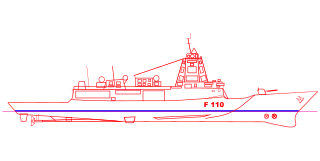
The F110 class are a new class of future Aegis combat system frigates of the Spanish Navy. The project is being developed by the Ministry of Defence and the public company Navantia. The order of execution of the project will be given by the Council of Ministers in late 2017 or early 2018.

Cristóbal Colón is the fifth and last ship of the Álvaro de Bazán-class of air defence frigates entering service with the Spanish Navy. The ship is named after Christopher Columbus, an Italian explorer that discovered America in the name of the Crown of Castile. It is the most modern ship of the Spanish Navy.
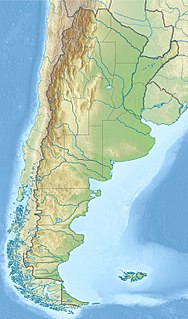
On 15 November 2017, the Argentine submarine ARA San Juan disappeared off the coast of Argentina while on a training exercise. After a search lasting 15 days, the Argentine Navy downgraded the operation from a rescue mission to a search for the submarine's wreck, implying they had given up any hope of finding survivors among its crew of 44. It is the worst submarine disaster since the accident on Chinese submarine 361 in 2003, and the second worst peacetime naval disaster in Argentina after the 1949 sinking of the minesweeper ARA Fournier.


